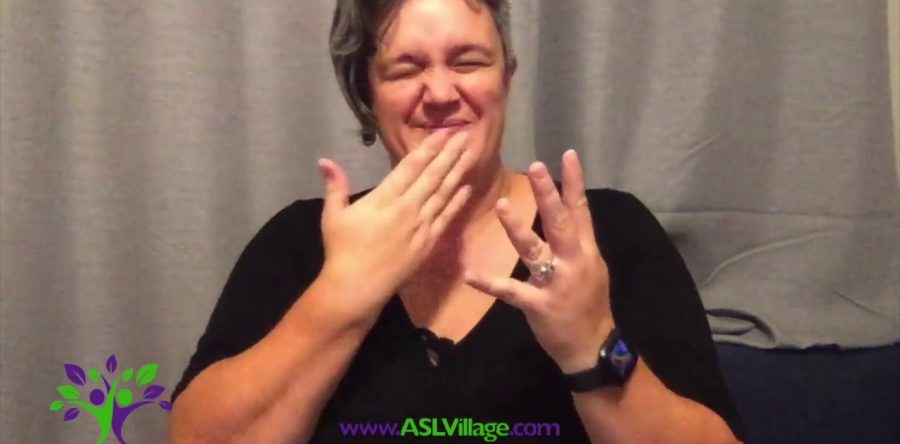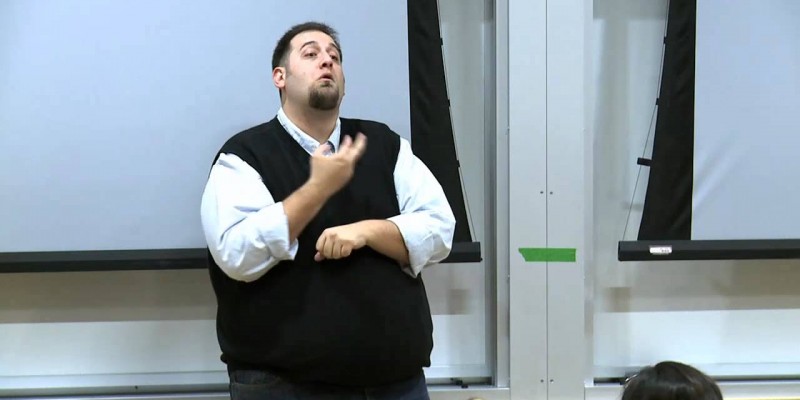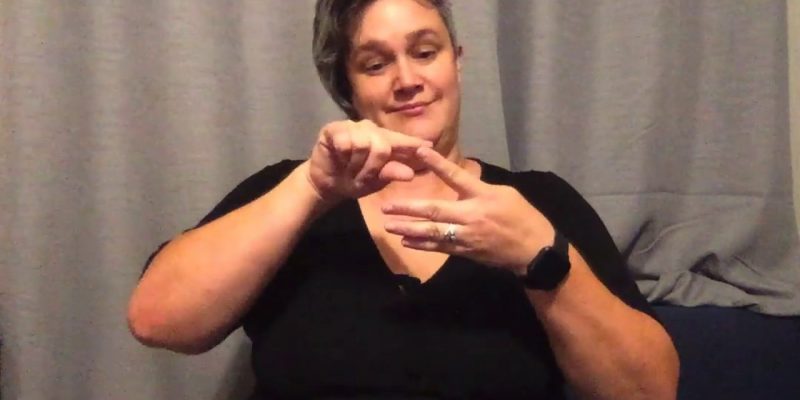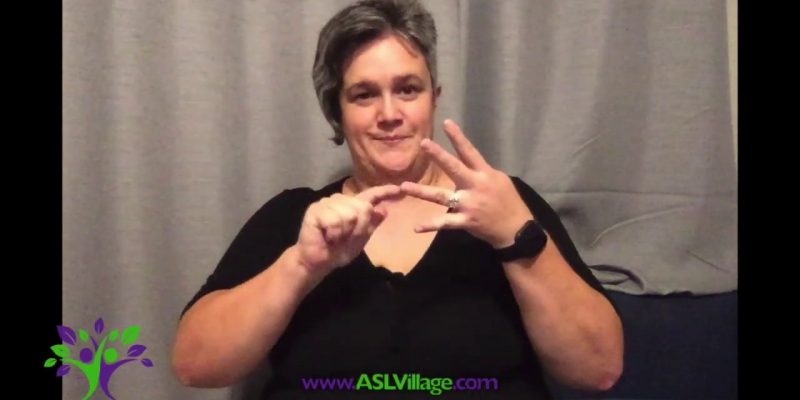Ben Jarashow talks about the elements of deaf culture from the societal (hearing and deaf communities) and medical perspectives. The application of eugenics and audism is also discussed. Limited slideshow for ASL viewers. Closed Captioned.
Children's Physical Developmental Clinic: www.bridgew.edu/cpdc
Team Interpreting with ASL Village – part 2

Team Interpreting with ASL Village – Part 1
Transcript: Hello there! I am going to be discussing 4 different topics related to teaming. I’ll have the other 3 videos posted later and there will be links as they come available so you can scan through the series where I welcome your input about the info we need to better support each other in teaming situations. In this first one, I want to focus more on a different type of teaming. Instead of interactive teaming, this is more of a passing of the baton to the next team coming in. This could happen in situations where you are in the hospital for a morning shift, and then getting switched out for the afternoon evening and you need to impart what knowledge you have before leaving.
This can also happen in VRS interpreting when a call may need to be transferred out due to a closing center, or a colleague coming to physically trade spots with you. These seem to be the most prevalent instances of this type of hand-off interpreting, when most of our work is either done solo or as an interactive team working at the same time.
If an interpreting job is being handed off, what is it that you want to know? If you are working in a hospital, what all should be included? A patient’s preferred language or terminology? Signing styles? What has been happening throughout their stay? What tests or medications that they have already had? Any issues or unexpected signs that came up? Was there anything unexpected that can now be relayed to the next interpreter? Do you include information about plans for upcoming tests, medications or if plans for discharge or delayed due to needing to be cleared by PT, etc. What kinds of information do you think need to be included while trading off?
If you are the interpreter walking into the situation, sometimes you don’t even know what you don’t know and what you might need to ask. You may arrive only to have the original interpreter just tell you to have a good day on their way out the door. Or perhaps there was a gap in service so there was no one to get information from or chain of conveyed knowledge. The issues come from the fact that nurses will consistently “give report” where they work together to hand off their patients with information about what has happened so far, as well as what is planned for the upcoming shift. I think interpreters would do well to take a page out of their book here.
When it comes to VRS interpreting, it may that interpreters are physically changing seats, or transferring out to another call center. What information do you think the next interpreter needs in this case? Who is involved? Purpose for the call (if you know it)? Is it important to include the reason for the switch as well? It could be that the leaving interpreter needs a break, is in over their heads or is not wanted by the callers for whatever reason. I’ve considered this information, can you think of anything else that I have missed? Especially in these two scenarios where you are trading places and handing off to the next interpreter, what else do you think they should know? Thanks for watching!
ASL Village offers mentoring, workshops and presentations for sign language interpreters (at all levels) who seek to improve their skills or gain certification.
Team Interpreting with ASL Village – Part 3
Transcript: Hello and welcome to the 3rd video in this series. This one is going to focus on what happens when you are actively working with your team interpreter. We’ll cover what that looks like, what you may need to know as you work together. One idea is to discuss taking notes, which is a bit funny to me as I am checking my own notes as I am signing this. If an interpreter is in the hot seat, is the other responsible for taking notes on what is happening? How does that work for your teaming sessions? If you do take notes what is typically included with them? Names? Acronyms? Terminology? Pronunciations for when you are working into English? What other information should be included here?
One of the ways that I like to use notes is by making a map of speakers as they introduce themselves so I can keep track of the name of who is speaking. This allows the Deaf consumer to either look at who is speaking directly, or get the names from me after glancing at my paper. This also just helps me remember who is speaking too.
If you are in the “feed seat” (and I know that this can go by many other names, but my preference for the other interpreter who is not in the “hot seat” is “feed seat”), what are you responsible for? Will you be taking notes? Or just looking for reasons to criticize your team interpreter based on their sign/word choices? Or are you busy making grocery lists instead? Or just engaged with your phone? Of course, the hard thing about using your phone is that it is hard for others to tell if you are mindlessly scrolling social media, or looking for/accepting work, receiving updates about the current job, etc. It could be that you are perusing a book instead of being engaged in the feed seat. I can recall a few times that this has happened to me when a team took out a book and when I went to look for a feed, they simply weren’t ready to support me. Another instance can be having side conversations from the feed seat which makes it difficult to get a feed while in the hot seat.
What do you need to keep in mind in terms of adaptability while working as well? In my experience in both college classrooms and hospital settings, the setting is dynamic and you never know what changes might come. It doesn’t matter if you are in an art class, or being taken for an exam – it is always important to be able to take stock of where you are and where you need to be as the situation changes. It could be that you need to be ready to grab your bag and be on the move on a second’s notice. I’ve often taken it upon myself when I have been in the feed seat and we suddenly need to move to a new location that I will grab my bags and my team’s bag or drinks so we can all move along as the situation is actively changing. It’s just part and parcel of it for me and is an easy way to support my team!
It’s important to discuss how to be flexible together, and what your strategy will be for switching as well. It could be as simple as taking about how to indicate when it is time to switch, and if you will physically change seats, or just visually or physically indicate to one another that the hot seat has shifted. I’d love to see what else you have in mind, so please leave a comment below about how you best work together while interpreting as a team.
ASL Village offers mentoring, workshops and presentations for sign language interpreters (at all levels) who seek to improve their skills or gain certification.








